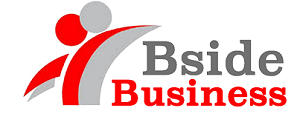Effective Internal Control Systems and Optimal Processes and procedures

How do firms choose their proper control systems? What’s the nature and satisfaction of the good control systems? What are critical areas of proper control systems? What’s the nature and satisfaction of internal control systems as critical component of proper control systems? These proper policy questions communicate with negligence optimal business internal control systems, processes and procedures made to create and sustain operational performance excellence that maximizes the roi and shareholders’ wealth while minimizing risks exposure as well as the price of operations, concurrently.

Clearly, effective internal control technique is correlated with optimal operational performance excellence and demanding to look business systems and techniques made to raise the wealth producing capacity within the enterprise. Of these series on business performance excellence, we’ll concentrate on the pertinent proper control system questions and offer some operational guidance. The overriding cause of this review should be to highlight some conceptual framework, quality management theory and fitness, proper relationships, and industry guidelines. For particular financial management strategies check out a dependable professional.
Internal controls as integral area of the proper control systems is interrelated volume of activities enforced across the standard operating procedures in the organization, made to safeguard assets, minimize errors, and make sure that operations are conducted pursuant to standards. While proper control systems establish standards and techniques for calculating performance, determine if actual performance matches the standard-expected performance, and execute corrective action, internal controls are produced to mitigate the amount and kinds of risks the customers are uncovered.
Further, while control systems ensure operational effectiveness, control activities frequently slow lower the routine process flow of financial operations, that may reduce its overall efficiency. Consequently, the perception of internal control systems requires management to balance risk minimization with operational efficiency. This method can every so often lead to management accepting a danger to make a proper profile that enables a company to function more wisely, even when it suffers periodic losses because controls are really deliberately reduced.

Additionally, all business strategies vulnerable to restricted optimization have costs and benefits. The critical question for you personally is: Perform benefits justify the price? Used, executive leadership applies the net present value method of weigh the price and advantages of structures, systems and techniques. The best option maximizes the net benefit by equating marginal costs and benefits.
Some Operational Guidance
Generally, no organization is protected against misappropriation, embezzlement or corruption-whether it’s accidental or deliberate. Many organizations don’t assess misappropriation or corruption threats until they have happened. Effective internal control systems must be made to mitigate the amount and nature of risk which organizations experience. Used, as integral a part of internal controls, organizations leverage technology-enabled strategies to scan inside the entire spectrum of operational risks, quickly.










